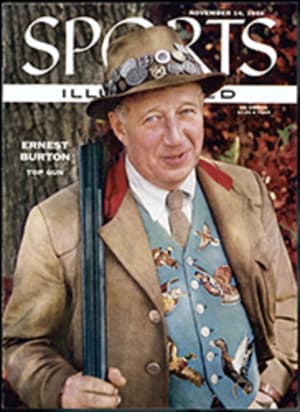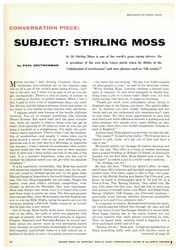
INDIA'S GIRLS: FROM PURDAH TO THE PLAYING FIELDS
While India cherishes the past, its people are fast becoming accustomed to living in a modern world. And, while they still play the old games Ylla photographed, they are also caught up in a social revolution in sports—a trend so far-reaching in India it has even touched the women.
Twenty-two young women trooped onto the field at New Delhi's National Sports Stadium recently for the first all-India women's football match. They wore short divided skirts, blue or maroon jerseys, and their braided black hair was tied with red ribbons. A thousand fans rose in the stands to cheer as Bombay's comely Bessie de Souza, 19-year-old captain of the Blues, won the toss and admonished her team: "Now girls, remember, no charging, jumping, pushing, knocking or tripping." Bessie's Blues beat the Maroons, captained by 15-year-old Rita Mukerjee, three goals to two.
Before World War II, most Indian girls, whether Hindu or Moslem, were kept in strict purdah. They dared not show their faces in public and were not supposed even to possess legs. Today they play most games, including polo. In Delhi last month glamorous Indian film stars donned pads to play cricket. One went to bat in a shalwar (knee-length silken tunic) and pajama trousers, and 2,000 of her fans rushed the umpire when he declared her out.
"The football field has been hitherto an exclusively masculine domain," says Begum Aizaz Raisul, president of the All-India Women's Hockey Association. "I am glad Indian women are coming forward to take their rightful place. They are developing a sense of discipline, teamwork and tolerance." Says Mrs. Sucheta Kripalani, wife of India's Socialist leader Acharya Kripalani and herself a member of parliament: "I wish them all success."
Indian men have been playing Western games for a long time (India's first touring cricket team went abroad in 1886) but until recently Western sports were confined to an Indian upper crust closest to British rulers. The British themselves picked up polo from Indian princes and many a maharajah's or nawab's son has wielded a straight bat and bowled a wicked ball on the playing fields of Eton. The roll call of India's crack cricketers reads like a list of blue-blooded names from Tatler's society page.
But Western sports are rapidly filtering down to those below. Young Indians formerly took their physical culture in the form of yoga exercises. They would sit long hours with their right feet on their left thighs and their left feet on their right thighs, breathing deeply and concentrating on the tips of their noses. But today every school and college in India has Western-style athletics. The result is that low-caste students with good muscular development fearlessly bruise many a contemplative Brahman in the hurly-burly of Western sports.
To encourage further growth of Western sports, India's minister of women's health, Rajkumari Amrit Kaur, recently coaxed to her country the British soccer coach, Ron Meades, and the Czech table tennis expert, Victor Barna. The India Volleyball Association invited a Russian volleyball coach. Not to be outdone, the United States has sent a basketball expert as well as Swimmer Sammy Lee, Pole Vaulter Bob Richards, Sprinter Jesse Owens and Olympic Decathlon Champion Robert Mathias. Indians freely hint that these sporting visitors from the free world have done the West more good than many speeches about democracy. (One Russian soccer team, on the other hand, somewhat marred Indo-Soviet relations by leaving their boots lying about on their hosts' beds and discarding banana peels in lavatory bowls.)
Though India has many soccer associations, and tournaments are regularly played in all cities, the standard of play remains low. Indians do better at field hockey. They won the event in the 1952 Olympics and this year in a strenuous 14-week tour of New Zealand and Australia, the Delhi Wanderers played 38 matches, lost only one and scored a total of 203 goals to their opponents' 23.
Last year India (with Indian women participating) carried off four gold medals for the high jump, discus and hammer throw, 110-meter race and women's relay race in the Inter-Asian games at Manila. This year at Wimbledon, India's Ramanathan Krishnan lost to Chile's Luis Ayala in the third round and India's Naresh Kumar lost to Tony Trabert in the fourth round. In the quarter-finals of the doubles, the Indians lost to Australia's Rex Hartwig and Lew Hoad. In the interzone finals for the Thomas Cup, the world badminton championship, India beat the U.S. this year, six matches to three.
But cricket is still the Western game in which Indians excel. In March of this year an India cricket team toured Pakistan and played 14 test and provincial matches. All five test matches were drawn. In the sacred name of cricket the Pakistan government lifted nearly all travel restrictions and, for the first time since partition, thousands of Indians poured into Pakistan without being chivvied by suspicious officials on both sides of the border. Explained Iskander Mirza, Pakistan's minister of interior affairs, "Nehru and I are both keen cricketers."

